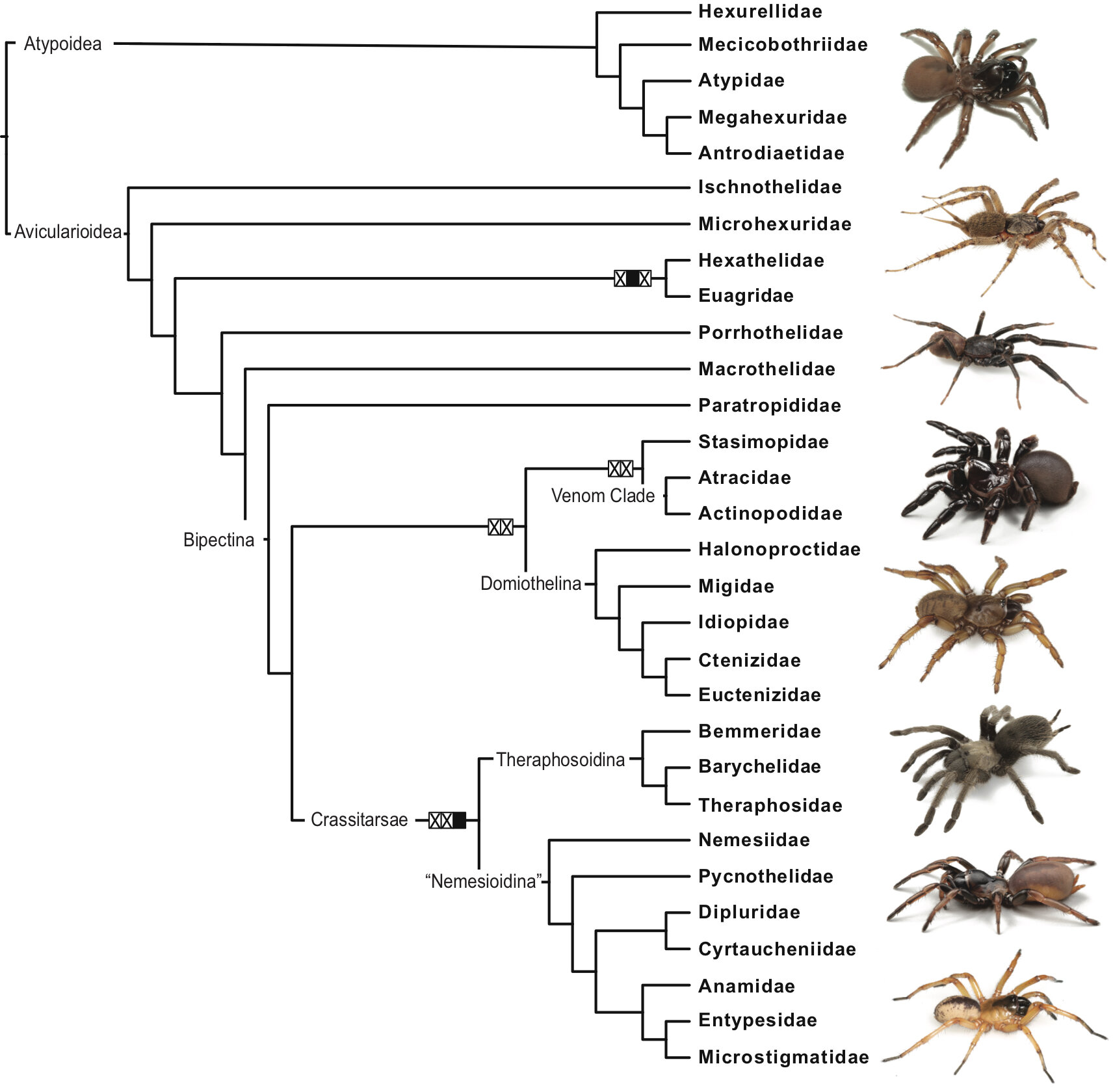
What we’re fascinated with
Systematics, taxonomy, and the evolution of terrestrial arthropods, especially spiders and millipedes! We use molecular, morphological, and ecological approaches to study evolutionary diversification at multiple scales (from populations to higher taxa).
Image credit: Jason Bond
Our approach
The primary focus of my research program is the discovery, conservation, and investigation of the patterns and processes responsible for the diversity of life. My research program works to:
Document biodiversity by discovering and describing new species (and higher taxa, genera and families)
Identify dimensions of diversity and the underlying evolutionary processes that generate it
Use these findings to recognize endangered populations and taxa and inform conservation practices.
With our research, we aim to
Integrate genomics into phylogenetics
The application of genomics to non-model organisms, like trapdoor spiders and tarantulas, has transformed the questions we can ask and the type of data available to evaluate the patterns & processes of diversification.
Transform our view on spider relationships
The work we've been doing over the past four years has really transformed our view of spider relationships. We've made major advances in spider classification to include recognizing a large number of new mygalomorph family rank taxa.
Change our understanding of life on this planet
Recognizing new biodiversity and thinking about how genomic diversity is distributed across the landscape is fundamentally changing what we know about our planet and the other forms of life with whom we share it.

Discover our projects
Investigating the origin of silk use in spiders
Spiders represent an ancient lineage known for their extraordinary biomaterials, including silks. These adaptations make spiders key predators in most terrestrial ecosystems. Our recent phylogenomic analysis includes representatives of all major lineages and recovers some fundamental spider clades.
Morphological evolution of millipedes
Mate choice, copulation, genital morphology, and sperm storage are not very well understood in millipedes. The use of three-dimensional x-ray computed tomography (μCT) provides new morphological data regarding millipede reproductive systems in both the female and male, including chitinous sclerites and membranes, muscles, glands, oviducts, and sperm conduits.
Understanding speciation and broad-scale patterns of biodiversity
Research in the Bondlab is principally aimed to 1) document biodiversity by discovering and describing new species (and higher taxa, genera and families), 2) identify various dimensions of diversity and those underlying evolutionary processes that generate it, and 3) use these findings to identify threatened or endangered populations and taxa.



















